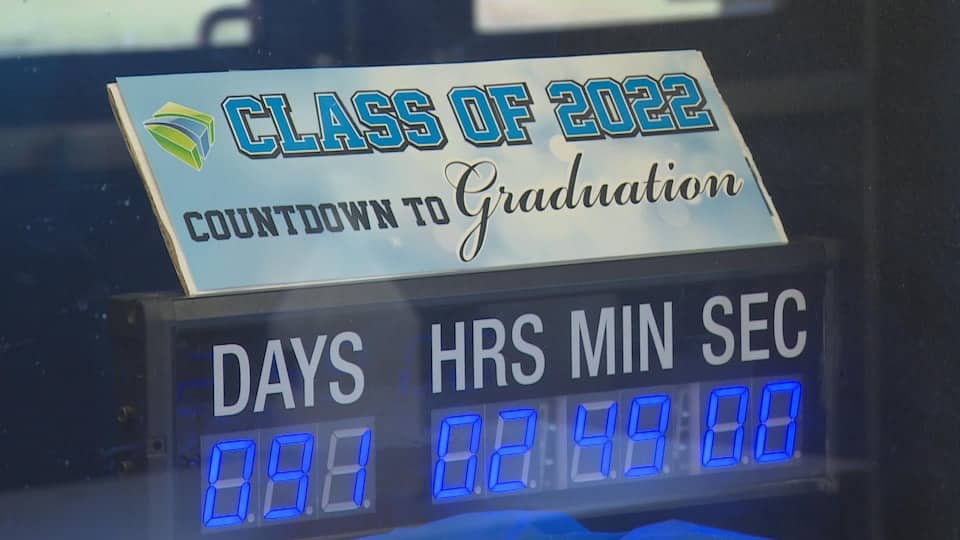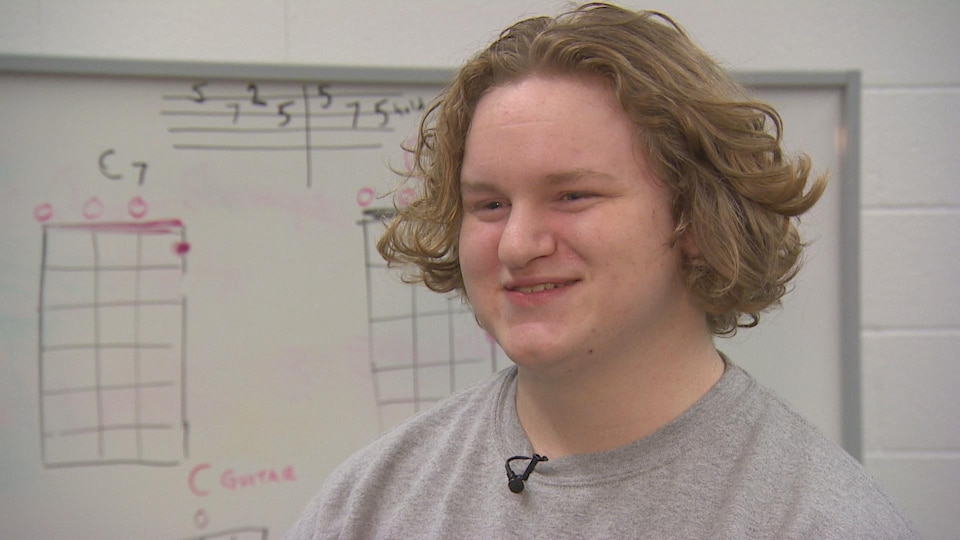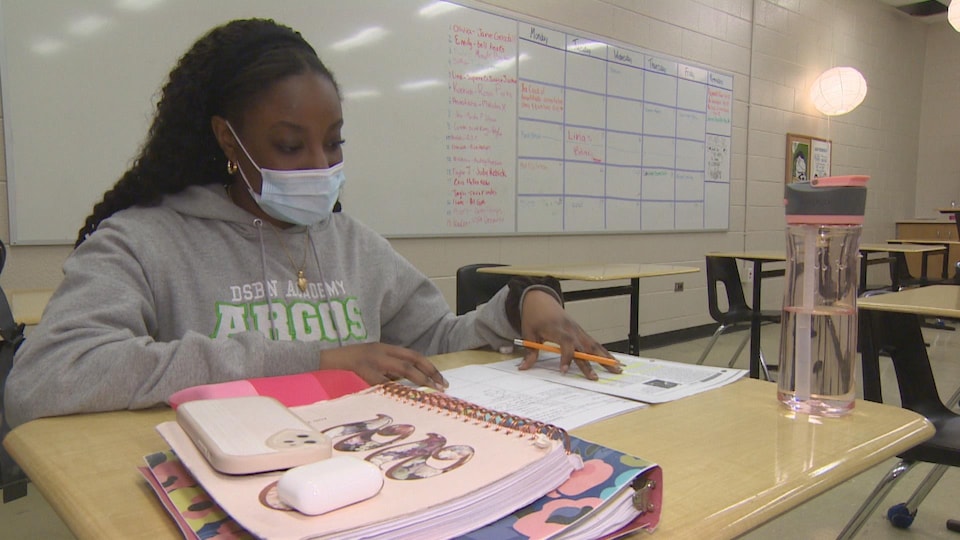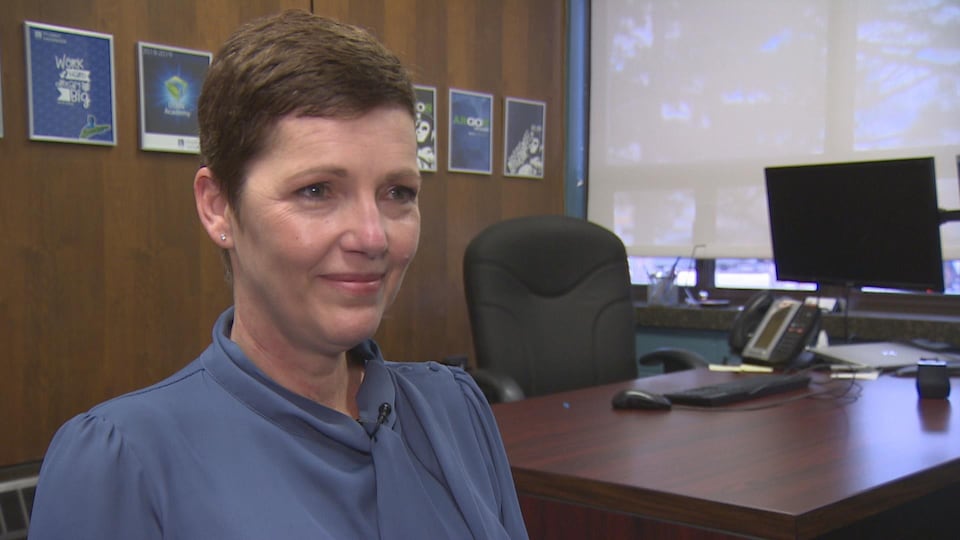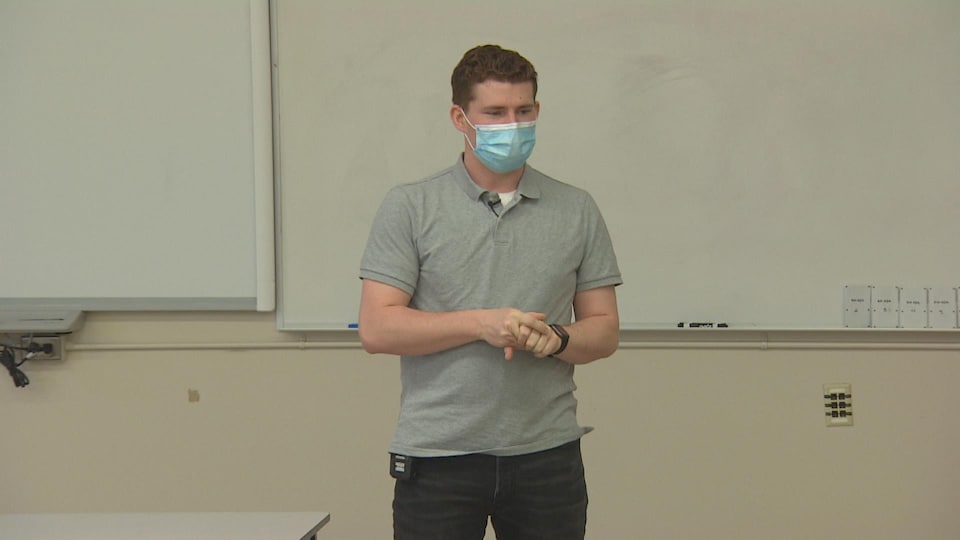It’s a kind of mantra that reminds students that they are committed and optimistic, that they work hard and above all that they will one day go to post-secondary education.
” We believe! We are the DSBN Academy. We have a future and we are responsible for it. We will be college and university graduates. We are committed and enthusiastic. »
That’s the big goal of this unique school that serves students in grades 6 through 12 from across the Niagara region. We want to give students all the tools possible to continue their studies at college and university after high school.
In fact, these young people will become the first in their families to obtain a post-secondary diploma.
This is the main criterion for admission to the academy.
Everything is done, proposed and taught so that they reach the ultimate goal.
Starting with the messages that can be read here and there in the school and which aim to inspire and encourage young people to surpass themselves.
An electronic count displayed at the entrance to the school reminds young people of the number of days left before the next graduation ceremony, to which all students of the school are invited.
The idea is to project oneself towards this objective.
” I remember the little boy I was when I came to the academy. And now, every day, I walk into the school and watch this tally. I can’t help but think this is for me. This is what I’ve been waiting for for years. It’s extraordinary. »
A different routine
The school day is longer than in a regular school, as extracurricular activities are compulsory after class.
School transportation is only offered after these programs.
The teachers participate in the activities. It’s another way to build bridges.
Each teacher is also responsible for advising students in small groups. It is a mentoring activity, a weekly point of contact that helps to address the different stages and challenges of life.
” What is special here is the bond you create with the staff. They are the same teachers throughout the years and stages. We can rely on them and ask them for help when necessary. »
The Academy believes so much in the importance of mentoring students that she helps them prepare their applications for colleges and universities.
The procedures take place during school hours. The school even pays the related fees.
10 years later
The Academy is inspired by schools in California. It was originally intended for underprivileged children in Niagara, which sparked controversy 10 years ago. Many feared that young people would be stigmatized.
The admission criteria had therefore been changed.
For 10 years, only children whose parents have not completed post-secondary education have been admitted to school.
Lisa Nazar participated in the establishment of the school. She is now the director of the secondary level at the academy.
She vividly remembers the challenges of the early years when the whole area was scrutinizing the school.
” I have worked in the past in schools where the parents of students did not have a post-secondary education and where many families were disadvantaged. It has always worried me. In elementary school, children from these families generally did very well. Then, in high school, there were the challenges of life. And these students did not always have the necessary support to continue their studies. »
Hundreds of students attended the academy during its first year of existence. This year, the school has 450 students and could accommodate more. She’s not at full capacity.
She therefore has no waiting list and should not refuse young people either.
According to Lisa Nazar, 89% of students enroll in post-secondary education within a year of graduating from high school.
However, it is difficult to know how many young people are pursuing their post-secondary studies, since they are not required to provide this information to the school.
Recognized help
Kevin Gosine was one of the school’s concept skeptics 10 years ago. He is a sociologist and teaches at Brock University.
He had taken part in information evenings and in the debate that prevailed in the community at the time.
He feared that young people who frequent the academy are stigmatized and that they are not in contact with a diversity of children.
Ten years later, he has not scientifically studied the successes of the academybut he’s had graduates from the school in his classrooms and only hears good things about their experience.
” I still have reservations about the idea of separating students according to their socio-economic status, their race, their special needs. I think it is beneficial for young people to interact with peers from different backgrounds. That being said, I always love to hear stories of initiatives that help tackle inequality. I’m glad to hear about the Academy’s successes that I’ve seen through the stories, anecdotes and feedback I’ve had so far. »
Give back what we have received
Zachery Harrietta is part of the first cohort of graduates.
He is completing a university degree in science this year and plans to start a second in September in teaching.
He is therefore the first in his family to obtain university degrees.
Mr. Harrietha says he enjoyed his experience at the academy that he comes back every week to volunteer, a way of giving back what he has received.
In addition, his sister is finishing her twelfth year this year at the academy. It is now a family affair.
However, his children, if he has any, will not be able to attend school since they will have a father who will have had a university education.
” It’s sad to know that my children won’t be able to study at the academy. But it shows that the program is working. I will be able to give them the support and the tools that I have received here. »
Her mother, Jackie Harrietha is proud of her children and proud to have made the decision to send her eldest to the academy 10 years ago, despite the controversy. A single mother of three children, she could not have offered him all the resources that the school offered him.
According to her, when people really know how the academythey let go of prejudices and preconceived ideas.
Reference-ici.radio-canada.ca
